《1 Research background and progress》
1 Research background and progress
Agriculture in China faces conflicts and challenges in various fields: productive resources and demand, agricultural population and labor force, infrastructure and natural disasters, product quantity and structure, and operating cost and benefit. As a result, accelerating the development of a new mode of agricultural production is essential, which considers the resources and does not overburden the environment. Land is a fundamental resource for human survival and development. Farmlands in good condition, which are both ecological and highly efficient, underpin modern agriculture. Nonetheless, rapid industrialization and urbanization have caused a raft of issues in sustainable utilization of land resources, including the non-agriculturalization of farmlands resulting from large-scale city sprawl, abandoned land due to disordered rural development, land pollution from random pollution emissions, and steady decline in the quantity of high-quality cultivated land [1]. Furthermore, land sandification, salinization, and water and soil loss have yet to be reversed at a basic level. The situation calls for intensive, engineering-based, and technology-based land development, utilization, and consolidation. These actions would provide scientific and technological support for managing the quantity, quality, and protection of the ecology of resources [2,3].
In terms of improving the quality of cultivated land, a critical role for land-engineering technology is necessary, which is emphasized by the strategy of innovating technologies for thorough explorations of land, sea, and air as as land engineering. Land-engineering technology also plays a pivotal role in improving the consolidation of degraded land, utilizing waste land, and restoring land ecology. It further aims to enhance the application of engineering- and ecology-based technology in land consolidation. Viewed at a regional level, land consolidation includes consolidation of basic farmland construction, comprehensive farmland, rural settlement, and unused and degraded land [4]. Recent years have demonstrated innovation and development in engineering practices of land consolidation, which include the shaping of land parcels, high-standard farmland construction such as irrigation water conservancy. These engineering practices also include field roads, recognition and demolition of idle rural wasted areas, construction of farmland background [5,6], reformulation of soil from sandy land and red puddle (sandstone) [7], ditch consolidation and land formation in hilly loess areas [8], comprehensive control of stony desertification in the Karst region [9], and (in terms of methodology), change from discharging to storage of alkali soil [10]. Land-consolidation projects have also shifted from increasing the area of cultivated land to improving its quality and from optimizing the land function to improving the land structure. However, major remain, e.g., elimination of structural obstacles to land use; improving the water, soil, air, and vegetation environments where crops grow; providing the most suitable land formula to meet the growing demands of crops; and realizing order-based consolidation of problematic land.
Currently, the development trends in modern agriculture include blue agriculture (which is based on marine resources), white agriculture (which is based on microbial resources of plants), molecular agriculture that relies on plant and animal inheritance and transgenic technology, and space agriculture (which changes the plant and animal inheritance technology as a result of space technology). Improvement of crop varieties is critical for the of modern agriculture and is an important method of meeting human demands for grains [11]. Achieving modernization is dependent on the efforts to break the constraints and degradation of land and water resources and optimize the agricultural-production environment. The root cause of large-scale production reduction and failure of super rice in the Anhui province is the crop adaptability and absence of studies related to improved varieties, fertile farmlands, agriculture, and agricultural technology. In this regard, developing modern agriculture is essential by combining the physiological adaptability of crops with the ecological suitability of soil as well as by increasing the degree in which improved crop varieties are linked to fertile farmlands.
Comprising 41% of the world land area and 38% of the global population, arid and semi-arid regions are subject to the twin threats of climate change and land degradation [12]. China is one of the countries with the most serious land degradation and sandification problems. By 2014, the expanse of sandy land in China had reached 1.721 × 106 km2 . The sandy areas are mainly located in the northern agro-pastoral transition zones and northwestern arid [13]. This condition has severely undermined the ecological environment, natural resources, society, economy, and human life. The agro-pastoral transition zones in China are principally areas covered by aeolian sandy soil and Specifically, windy and sandy areas are defined as having barren, loose, and runny soil, whereas loess areas have loose structure and crisscrossing gullies. The on-going exacerbation of the imbalance between supply and demand land and water resources has become a major barrier that restricts the sustainable development of agriculture in agro-pastoral transition zones [14]. Because of the effect of natural environment and human factors, these areas are subject to severe land sandification, shrinkage in cultivated land areas, reduction in productivity, and of rural poverty [15]. Thus, replenishing cultivated-land resources, easing the relationship between humans and and improving the agricultural quality, efficiency, and farmer income through consolidation of degraded land in agro-pastoral transition zones are highly significant. Therefore, by summarizing the project of sandy-land consolidation in agro-pastoral transition zones, the current study presents an order-based sandy-land-consolidation concept using both optimized allocation of soil body and selection of crops. This study is based on the research contents and preliminary results of the “Test Station of Modern Agriculture Dual-Optimization Project of the Institute of Geographic Sciences and Natural Resources Research, Chinese Academy of Sciences.” This study explores the development method of linking sandy-land consolidation and modern agriculture in agro-pastoral transition zones from macro man–land relationship to micro crop–land relationship.
Soil-particle composition is a crucial representation of the soil texture and structure, and the core issues in land sandification include excessive content of sand grains and lack of silt and clay. The most effective strategy for consolidating sandy land, which is characterized by loose texture, large space among soil particles, and poor waterand fertilizer-retention capacity, is to improve the texture and perfect the soil-particle and soil-layer structures of sandy land [16]. Making the sandy land more retentive of water is critical for constant land utilization. However, most of the measures employed to achieve greater water retention do not approach the problem from the structural issues of sandy land, making the application and replication more difficult. Straw, gravel, plastic film, and other coverage measures waste time and energy. Chemical water-retaining agents are costly, and the high-molecular polymeric materials in the agents carry the risk of environmental pollution. The nutrient contents of municipal sludge, lake sediment, and other substances are high, but they suffer from such issues as limited sources and excessive content of heavy metals. Saw dust, straw, cinerite, and other substances do not carry the risk of environmental pollution, but their water-retaining capacity is limited. Thus, they cannot be applied in a large scale [17]. Soil replacement is one of the common measures used in sandy-land consolidation, and using loess to improve sandy land can evidently increase the water-retaining capacity and content of organic matter and available nitrogen in soil [18,19]. Han et al. [20] proposed mixing rich sandstone and sand in Mu Us Sandy Land, thereby reformulating a new type of soil based on their physical complementarity. The reformulation ratio of sandstone to eolian sand was 1:2–1:5. The structure and texture of the reformulated soil noticeably improved as well as the productivity. After their study, Yi Zhijian and his team [21] found that adding vegetable-fiber adhesive to sand enabled the sand grains to regain universal binding force and made “desert soil,” which became an ideal carrier of plant growth. However, disagreements remained on this point because of the lack of support from observation data, high cost, risk of environmental protection, and other issues. The thickness of the sand, loam, or clay layers in a soil profile and their position in the soil profile are important for water movement and fertility [16]. Thus, study on improving the soil structure of sandy land in agro-pastoral transition zones is imperative.
Sandy-land consolidation and utilization is a systematic project. The combination of improvement in soil particles and soil body using agronomic measures and the reasonable matching between the soil property and planting structure are essential for sustainable development of agriculture and protection of land and water resources [9,22]. Most current studies are limited to theoretical conception and test simulation, and field-test data and exploration have not become a foundation for internal mechanisms. The study on the Mu Us Sandy Land area has demonstrated that after sandstone and sand were reformulated to the soil, the newly-formed soil more rapidly became mature and fertile through cultivation, increased application of organic fertilizer and green manure, addition of nutrient substances, and application of bio-fertilizer and other physical, chemical, and biological means [7]. The results of the planting adaptability of different crops in the reformulated soil demonstrated that wheat, corn, and soybean experienced the highest output when sandstone and sand were mixed at the ratio of 1:2, and potato achieved the highest yield at the ratio of 1:5 [20]. Wang et al. [23] proposed separate irrigation and fertilization strategies for arid, moderate, and moist years by assessing the water and fertilizer utilization efficiency of the soil reformulated with sandstone and sand, which indicated that planting potato on such soil could realize 61% savings in water using water-saving irrigation [7]. The First Expert Workshop on Land Engineering Technology of Modern Agriculture held in Yulin in the Shaanxi province in 2016 demonstrated the relationship between optimized allocation of fertile farmlands with land consolidation and optimized selection of improved varieties in modern agriculture. The workshop came up with considerations and measures for promoting innovative double-optimization engineering technology in modern agriculture that is well-suited to China’s national conditions and the regional characteristics of agro-pastoral transition zones.
《2 Test of modern agriculture dual-optimization project》
2 Test of modern agriculture dual-optimization project
《2.1 Project test design》
2.1 Project test design
The test station is situated in the Yulin Modern Agriculture Science and Technology Demonstration Area, which is a national agricultural science and technology park. It is located in Yubujie Village (38°22' 43" N, 109° 26' 05" E) in Niujialiang Township, Yuyang District, Yulin City, Shaanxi Province. The test station is 125-m long from east to west and 65-m wide from north to south and has a total area of approximately 0.8 hm2 . The northern and southern parts of Yulin are wind-sand grass land and gully areas of loess hill, which account for 42% and 58% of the total area in Yulin, respectively. Specifically, the sandy-land area is 5.3 ×106 hm2 , which accounts for 91.65% of unused land area in Yulin. The research area has a temperate continental monsoon climate with average annual temperature and precipitation of 8.1 °C and 413.9 mm, respectively. The research area has abundant underground water resources at approximately 20 m under its riverbed, rich light resources, and sufficient amount of heat. Therefore, Yulin was recognized as an important construction base of Shaanxi No. 2 Granary in Shaanxi in 2013.
The original soil texture in the test area is natural sandy land consisting of quartz and other minerals and shows signs of severe wind erosion. Sand grains are the main composition of the soil-grain size. Under the loess–ancient soil order in the fourth age in North China, the northern red clay of the later third age widely developed and was distributed all over the Loess Plateau (Fig. 1) with a thickness that ranged between 50 and 70 m. The thickness of the red clay in the Jiaxian County of Yulin is 65 m [24]. The parent material of red clay was the red clay in the tertiary age, and after the loess layer that covered the clay was entirely eroded due to water and soil loss, the clay layer appeared at the surface. Red clay has a heavy sticky texture and poor air permeability and becomes easily rimous when exposed to the surface. Its clay grain size is similar to that of loess, it does not have collapsibility characteristic compared with loess, and it is mainly used in brick and tile baking. Loess is a yellow polyporous silty soil with columnar joint formed under dry climate conditions, and it collapses within 1–2 min after becoming wet [25]. Red clay, loess, and sandy soil are unevenly distributed along the Great Wall in Yulin, and red clay is widely distributed along the edge of and within Mu Us Sandy Land (Fig. 1). This condition provides the material for improving the sandy-land structure within a distance that only requires short transportation at low cost.
《Fig. 1》
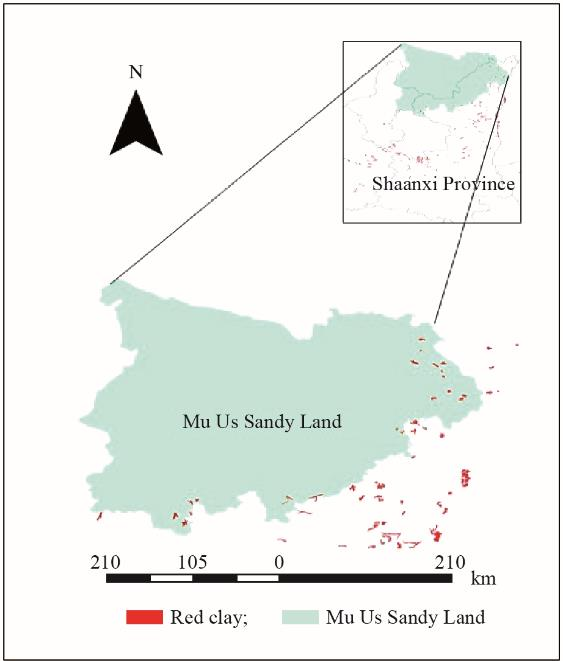
Fig. 1. Distribution of red-clay resources surrounding Mu Us Sandy Land.
《2.2 Principle of optimized allocation of soil body》
2.2 Principle of optimized allocation of soil body
Soil particles are the basic components that make up the fixed framework of soil. The size and arrangement of the soil particles exert significant effect and provide restrictions on the water, fertility, air, and heating conditions and microorganisms in the soil. Soil particles are mainly classified as boulder, sand grains, powder particles, and clay [16]. Because of the lack of clay and organic matter, sandy land cannot bond to micro and macro aggregates; thus, it is poor at retaining water and fertilizer, which inhibits crop growth. Improvement of a sandy-land structure mainly includes reorganization of the soil particles, improvement in the soil-body structure, and enhancement of soil fertility. The Test of Modern Agriculture Dual-Optimization Project uses the physical complementarity between sand and powder grains and between sand grains and clay. It selects powder particles and clay as raw materials for sand-grain reorganization in the area surrounding Mu Us Sandy Land. Powder particles or clay of appropriate size cover the smooth sandy land and are then covered by sand grains. The sand grains are fully mixed with powder particles or clay via tillage. Thus, the surface-soil texture changes from sandy soil to sandy silt or moderate sandy soil, and the soil-particle size is appropriate (Fig. 2). This current study chooses red clay and loess that widely exist in the 30-km range surrounding Mu Us Sandy Land as clay and powder particles and sets up pure sandy land, pure red clay, and pure loess as contrasting elements with mixing ratios of 1:1, 1:2, 1:3, and 1:5 between the sandy land and red clay as well as the sandy land and loess (Fig. 3).
《Fig. 2》

Fig. 2. Optimized allocation of soil body in Mu Us Sandy Land.
《Fig. 3》
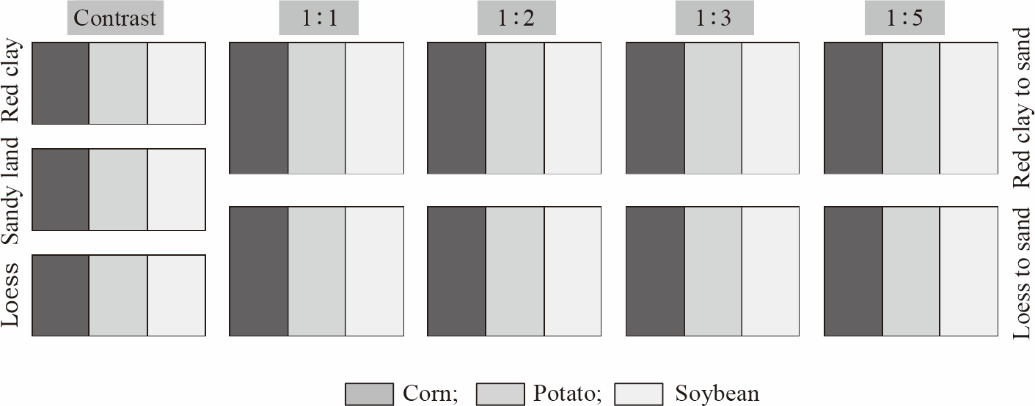
Fig. 3. Setting of the test area of Modern Agriculture Dual-Optimization Project.
By taking the reformulation of sandy soil and red clay at a ratio of 1:1 as an example, to ensure a reasonable structure of the newly-built soil after reformulation, we need to crush large red clay to the size of 0–5 cm so that the tiny particles will fill the gaps among the sand grains and larger soil blocks accumulate through the combination with the sand grains. To ensure a rational soil level after mixing, the 30-cm red clay covers the leveled sandy soil, and the 15-cm original sandy soil covers the red clay. Subsequently, a cultivator with a plowing depth of approximately 30 cm performs several times of plowing to fully mix the sandy soil with the 15-cm red clay at the bottom. In this manner, soil at the plow layer is formed, and the remaining 15-cm red clay at the middle part of the soil body serves as the water- and fertilizer-retaining layer (Fig. 2). The soil of the newly reformulated plow layer has a low nutrient content, and organic and chemical fertilizers need to be applied to increase the storage capacity of the soil nutrients and enable the reformulated barren soil to become soil with an appropriate nutrient storage capacity and reasonable structure. Before the crops are planted, decaying chicken manure is applied (15–20 m3 /hm2 ), and plowing is immediately performed to promote rapid maturing of the soil. Depending on the crop variety, fertilizer amount that is 1.5 times the regular amount used in the locality, which includes nitrogenous, phosphatic, and potash fertilizers, is applied. From two to three years after this higher level fertilization, crops can be planted by adhering to locally used normal fertilizing amounts and methods.
The inputs for the sandy-land consolidation are introduced into the main soil from reformulated materials, sandy-land leveling, coverage, organic fertilizer, plowing, and other related materials. Assessment of the structure of the input for sandy-land consolidation reveals that the reformulated material is the component with the highest presence. In particular, the prices of red clay and loess are RMB 30/m3 and RMB 20/m3 , respectively, and the total red-clay input in the sandy-land improvement and consolidation is higher than that in loess. By using different reformulation ratios, the costs of reformulating the soil by mixing red clay and loess with sand are RMB 67 200– 97 200/hm2 and RMB 47 200–67 200/hm2 , respectively (Table 1).
《Table 1》
Table 1. Analysis of the input in sandy-land consolidation. RMB/hm2

《2.3 Method of optimized selection of crops》
2.3 Method of optimized selection of crops
According to the differences in the biological features and cultivation needs of crops, distinct soil conditions are required on a crop-by-crop basis. Therefore, matching the biological adaptability of crops with the ecological adaptability of soil and affording the greatest possible opportunity to highly improved seeds are critical for the consolidation and utilization of problematic lands. The present study chooses local traditional crops such as corn, potato, and soybean as study objects. The distribution map of the test area is shown in Fig. 3. This study observes, monitors, and compares the growth and output of corn, potato, and soybean under different reformulation plans through testing and optimizes the best reformulation ratio suitable for the growth of different crops.
《2.4 Precise management test》
2.4 Precise management test
To create superior farmlands and develop highly efficient agriculture in the Mu Us Sandy Land area using the practices of Modern Agriculture Dual-Optimization Project, we need to determine the methods and amounts of irrigation and fertilization for large-scale cultivation after the land project. Water resources are essential factors in the land-consolidation project of Mu Us Sandy Land, and after the reformulation project, precise irrigation is needed based on the actual water demands of different crops, thus avoiding broad irrigation that uses excess water resources. Next, as the irrigation methods change, the traditional broadcast application, application of manure in small holes near the plants, and other application methods become unsuitable. According to the planting of crops on farmlands, the Test of Modern Agriculture Dual-Optimization Project utilizes independently designed fertigation equipment and realizes synchronous and quantitative management of water and fertilizer for multiple crops (Fig. 4). A fertilizer-mixing water pump is used to pump different fertilizers into a Venturi mixer to blend the water and fertilizer. A smart control box is used to initiate an electric ball valve and water-flow sensor to quantify the water and fertilizer, and a drip-irrigation tape is used to manage the water and fertilizer based on the types of crops planted on farmlands.
《Fig. 4》
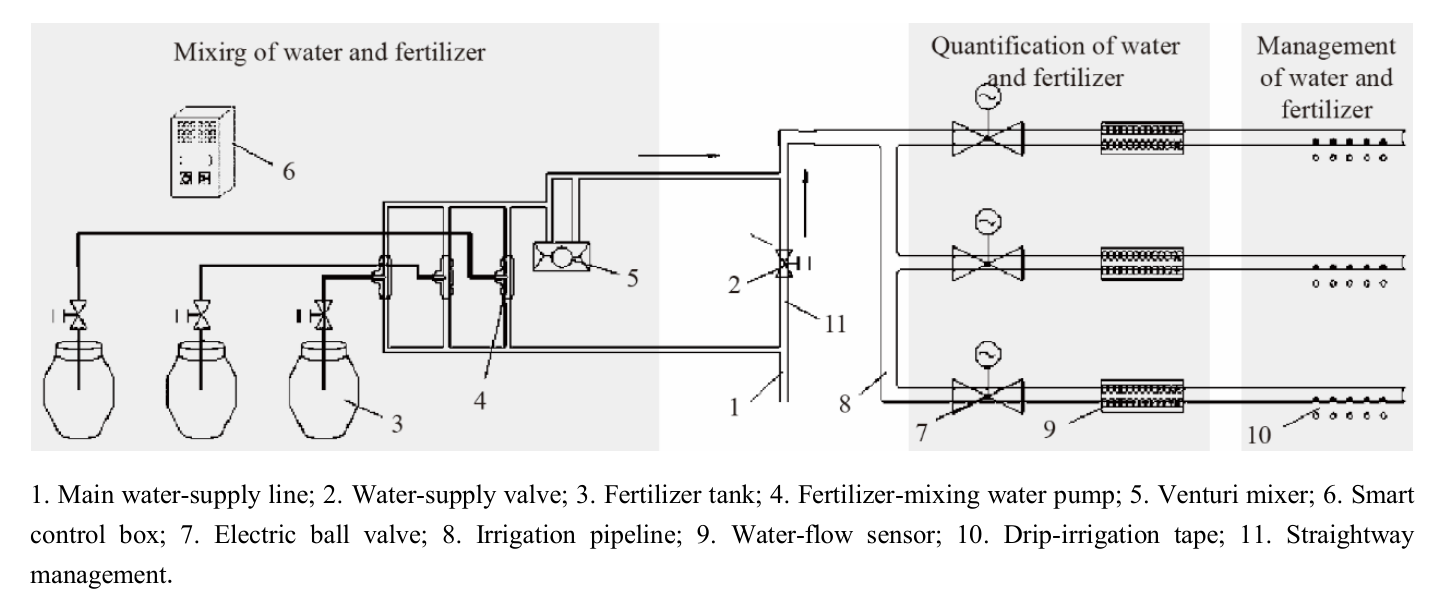
Fig. 4. Sketch map of the fertigation equipment.
After the optimized allocation of the soil body and selection of crops, the major subjects of this study include the following. 1) Physical differences: discrepancies between the red clay and loess in the reorganization of sand grains and improvement in the structure of soil body in Mu Us Sandy Land. 2) Matching differences: variations in the effect of different reformulation ratios on the soil nutrient pool and release rate. 3) Crop differences: growth disparities in corn, soybean, and potato on the reformulated soil body. 4) Benefit differences: distinctions in the input, crop output, and other economic benefits of the reformulated soil. Therefore, the major monitoring content of the Test Station of Modern Agriculture Dual-Optimization Project includes the following: composition of the soil particles, aggregates, unit weight, organic matter, and other physical characteristics; total nitrogen, total phosphorus, total potassium, available nitrogen, available phosphorus, available potassium, and other chemical characteristics of the soil; microbial community structure, abundance of microbial functional gene in the nitrogen cycle, diversity, and other biological characteristics of soil; and root-system biomass, format, output, quality, and other crop features within the different soil layers.
《3 Outcome application prospects》
3 Outcome application prospects
In view of productivity issues, efficiency of agricultural operation, and ecological and scientific issues of the production mode of the degraded land in the Mu Us Sandy Land area (Yulin), the composite-technology system for optimized allocation of soil body in sandy-land consolidation and optimized selection of improved varieties in modern agriculture is established by reformulating the soil through mixing of red clay and loess with sand. This process supports precise sandy-land consolidation and specific advancement of improved varieties and realizes order-based consolidation of sandy land and planting of improved crops on fertile land. The result in turn provides scientific and technological support for the linked development of degraded-land consolidation and modern agriculture in the Mu Us Sandy Land area (Yulin).
After the soil is reformulated by mixing red clay and loess with sand, we need to fully utilize the advantage of developed animal husbandry in the agro-pastoral transition zones to accelerate maturing of the newly formulated land and improve the nutrition structure of the soil based on local chicken manure, sheep manure, cow dung, and other farm manure together with commercial organic and microbial fertilizers. In terms of efficient utilization of water resources, the soil-reformulation process has been proven to enhance the water-holding and water-retaining capacity of soil [7], making it an efficient method to save water compared with the locally used traditional sandy-land-plowing process. The precipitation in the Mu Us Sandy Land area will likely increase [14], and the area has rich underground-water resources, shallow burial depth, and abundant underground water that exists within 20 m of the bottom of its river, guaranteeing water resource for land consolidation and utilization. Moreover, fertigation equipment and drip irrigation are used in the Modern Agriculture Dual-Optimization Project, which ensure precise management of water and fertilizer and avoid ecological risk in the development of water and land resources in the area. In terms of model replication and application, active research may be conducted in the area among peasant households who engage in small-scale production and large-scale planting enterprises to explore sandy-land consolidation and employ a utilization mode suitable for planting by the peasant households and large-scale planting by enterprises. Model screening, application, and optimization provide professional technology and a whole-chain productivity system for the development of modern agriculture based on the project tests conducted on the farmlands, which can effectively increase the compatibility of model application and, to an extent, cut back production cost.
Currently, global change, rapid urbanization, and irrational land use have resulted in degraded land, including desertification, salinization, and water and soil loss. We need to carry out land-measure and formula-based soil formulation and delve into the technology for structural land consolidation based on physical and chemical tests, area-based tests, and farmland observation. Studying the principle of compatibility between land-use suitability and physiological adaptation of crops is also essential to create, in a scientific manner, healthy soil body and ecological farmland systems. Comprehensive land consolidation facilitates the creation of high-quality farmlands, innovation in land-operation mechanism, development of rural complex, and formulation of a rural revitalization strategy, which are supported by multi-functional modern agriculture and characterized by the integration of man, land, and business (see Fig. 5). Future studies should focus on enhancing scrutiny of land-engineering chain, applying the principles of system theory and theories of natural science, engineering, agronomy, management, economics, and other disciplines. These studies should aim to tackle land-use issues, combine positional observation with engineering demonstration, and promote land engineering- and technology-based solutions to engineering problems and address precise technical issues. Thus, a whole-chain land project-management mechanism is created using engineering management, resource management, information management, and other relevant theories and realizes systematic standardization of the reformulation of micro land, creation of meso-soil body, improvement of macro-soil quality, and tackles macro-man–land relationship issue through micro-water– land and crop–land relationships.
《Fig. 5》
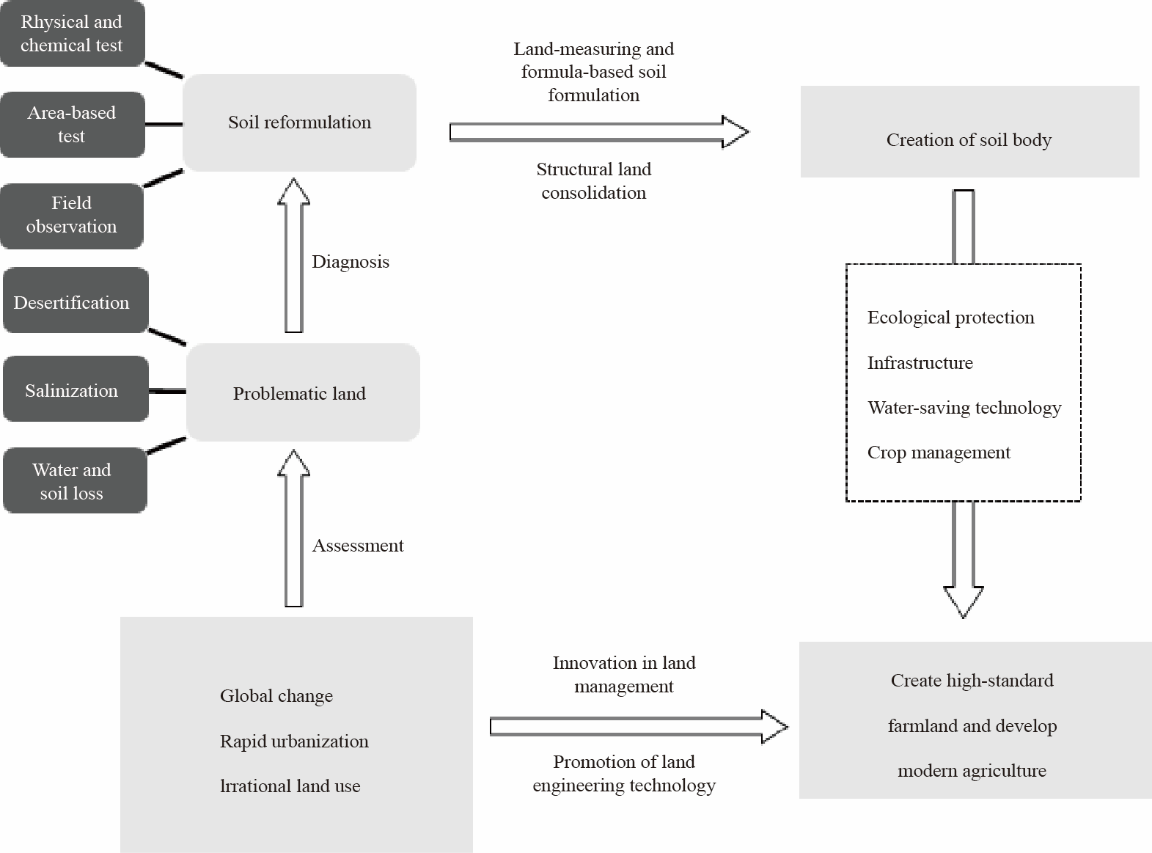
Fig. 5. Framework diagram of the problematic land consolidation and modern-agriculture development.

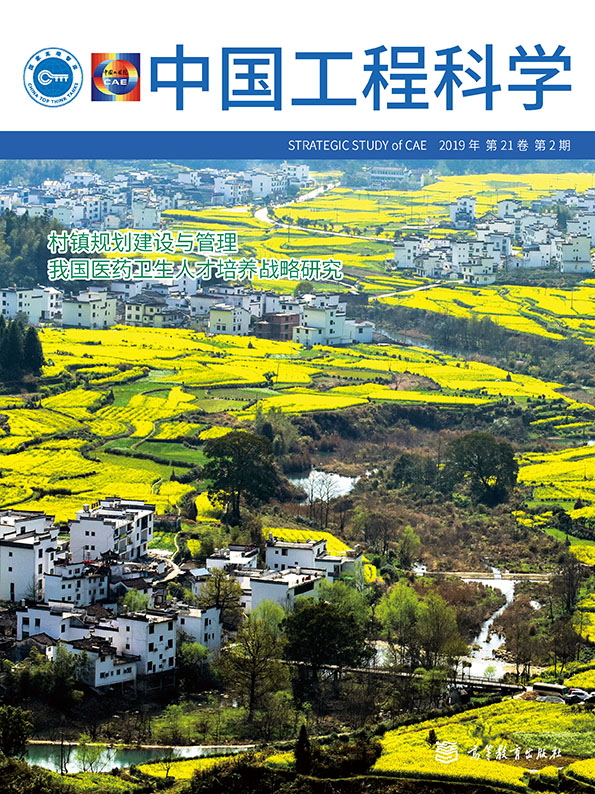












 京公网安备 11010502051620号
京公网安备 11010502051620号




